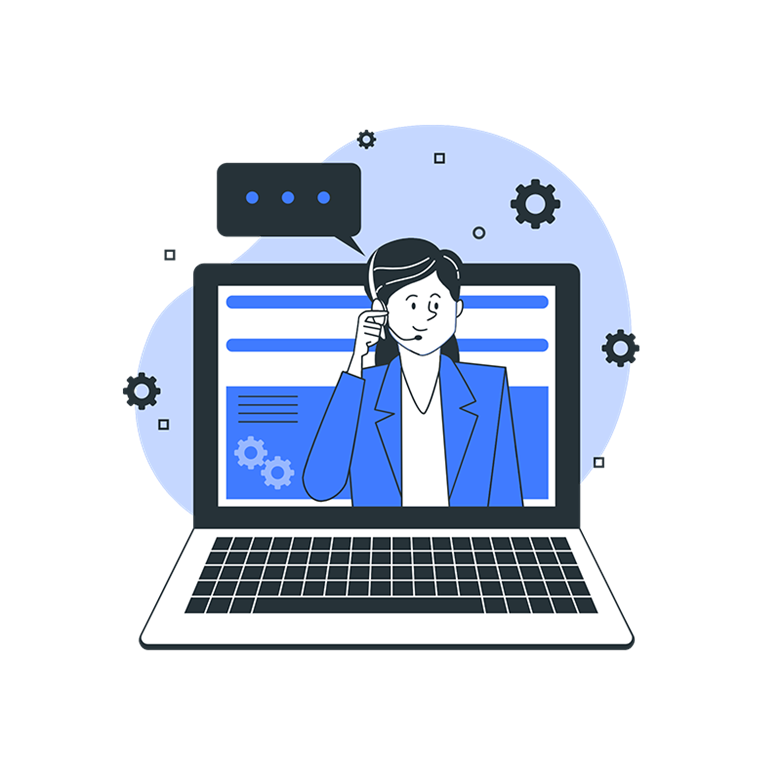Technical Support: An overview of the utmost necessity

Technical Support, also known as the tech support, is generally referred to as the services provided for technology related products or services. The services provided include guidance or help for overcoming a certain situation that has led to the inability of the product to work or has disrupted the services. It, however, does not include providing the technical training, customization of the product, or similar. The support provided can either be inclusive in the cost of the product or service, or would either require a cost to be provided. That, nevertheless, depends solely on a company’s policy. The means of providing support, includes but is not limited to: emails, phone-calls, real-time support (which could be over the phone or website chat-tool), or the portals where user queries regarding a certain issue are submitted.
Organizations of larger spheres, for the sake of avoiding any disruption to their services, have embedded services of support. The Internet these days, is one of the biggest sources for finding free technically-required support. It includes a sea of such users, who readily share their experience and guidelines to other internet users in context to a particular issue. The help that is provided by one internet user to the other, usually requires a platform. That said, such support is not guaranteed to be helpful; it is neither believed to be a secure means for having a technically-required support over the internet. Moreover, there also exist some of the companies which provide fee-based such support.
Tiers in a Technical Support

A support required in technical matters, for the sake of providing better services to the businesses, is divided into various different levels or tiers. The number of tiers incorporated in a technically-required support, depends on the volume of the customer experience that a company has to provide to its customers and the users. The primary reason why some companies or organizations opt for more than one level of support, is that they are eager to provide a kind of support that is almost frictionless.
Any organizational customer support resolves around the ability or capability of their support providers. It revolves around the importance given to the timely responses to the technical queries, the understanding of the support providers regarding the impact of their services, and the understanding of a certain issue for having it resolved in a better and efficient fashion.
A technical support service is generally divided into the following tiers:
Tier 0:
This level of support does not require the users to interact with a support representative. The users at this level are helped by the following means:
- Chatbots, which are usually embedded on a company’s website.
- Digital Virtual Assistants
- A section of the ‘Frequently Asked Questions’ or better known as the FAQs.
The means of support, at this level, is more like some ‘self-support’; using which, the users try to resolve the issues on their own. This is why, the tier 0, is also sometimes known as the ‘self help tier’.
Tier I:
Tier I, also known as the level 1 of support and is abbreviated as the ‘T1’ or ‘L1’. It is the first level of the customer support that is provided to the users for resolving the issues which they are facing; call centre support services is an example. Since, it is the very first level, where representative-based support is provided, it is therefore also known with the related donations, which are: front-end support, first-line support, level 1 support, super line 1, and similar donations which may reflect the beginning of a support provided by some company representative.
The support specialist at this tier, generally seeks information of the customer with the technical issues. It then, after collecting the information regarding the issue, tries to know the nature of the issue, by putting pieces of the information together. After what has been inferred from the information received, the support provider then provides the support by the best of the knowledge. However, it is very important to have a clear and unambiguous communication between the customer and the tech-support provider; so the latter may be able to better grasp the nature of the issue.
The information exchange at this level matters the most; since, it is on the very information’s basis the help would be provided. In case of a miscommunication, the support provided would be pertaining to what the technician understood; not what the user is actually facing. This is the reason why it is important to gather as much information from the user as possible. Some of the information that could be gathered in the real-time can be: a computer system’s name, screen or a report name, the message that is being displayed after the error has occurred, file logs, screenshots of before and after a certain error, or any step which leads to the error to occur. Once the understanding of the problem is done, the technician can better provide the user with the support.
The methods for resolving issues at this tier can include: verification of the physical layers, identifying if the username and passwords pertain, installation/uninstallation/reinstallation of some software applications, verifying proper setups of hardwares and softwares, and similar.
The supporting staff at this level has a basic understanding of the product or the services, which the company is providing. However, they are not trained enough for looking into the issues, which are complex and require higher competency. The goal is to have the query resolved at this level, so there does not remain the need to have it passed onto higher level. In some of the industries, the tier 1 support is provided to the customers beyond the normal working hours too.
Tier II:
Tier II, also known as the level 2 and abbreviated as ‘T2’ or ‘L2’, the support provided at this level is more technical and complex as compared to its predecessor tie; IT helpdesk support services is a pertaining example. This is the reason why the support at this level involves a high cost, if any; since, the support provider would be more experienced and would also have more insight of the product/service; also the query which has been passed is more complex in nature. It has various donations, such as: support line 2 support, administrative level support, and similar donations; which may depict the step-ahead technical understanding at this level.
The support provider at this level usually reviews the work that has been performed at the tier 1.
Also, the tech-support provider at this level would also confirm the time customer has been engaged with the tier 1 tech-support provider. This is important; since, it will enable the support provider in determining, how early the query should be resolved or prioritized; in order to avoid a hassle-some customer-experience.
The information needed for overcoming errors at this level includes: name of the failed program or application, information relevant to the databases (which may include table name, view name, package name), or the Application Programming Interface’s (API’s) names.
If the tech-support provider is not able to determine the root cause or resolve the issue, the query is then passed to the next tier. Moreover, many organizations, with the motive of providing their users with a better customer support, may directly provide a certain level of support to a certain query; without the need of having the query pass through all the tiers for support.
The list of queries or troubleshoots, which are pre-assigned a certain level of support, may include: installation and replacements of various hardware components, software repairing, test diagnose, virtual control of customer’s product solely for troubleshooting purposes and resolving the query. Some companies also tend to have remote IT support, instead of having support within the organization.
Tier III:
The tier III, also known as the level 3 and abbreviated as the ‘T3’ or ‘L3’, is the highest tier or level of support among the other tiers; an example is the texecom technical support. It involves guiding the customers in extremely complex and advanced situations; this is why some companies prefer outsourcing network support. It is also known with the heading as ‘the high-end support’ and the ‘back-end support’.
The tech-support providers at this level are experts in their respective fields. They not only assist the tech-support providers of the previous tiers, but also come up with the researches and developments to new or previously unknown issues. As in the case with the previous two tiers, before the support is provided, the time since the user has been engaged previously is determined.
The support provider at this level can be some developer or an individual familiar with the code and backend functionality of the product/service.
Tier IV:
Tier IV is normally the level, where the error occurred is beyond the capacity of the previous tiers to resolve. It is, therefore, not generally made to use; with the exception of few cases. To provide support at this tier, it is beyond the capacity of any organization. This is the reason why the Tier IV is not universally recognized.